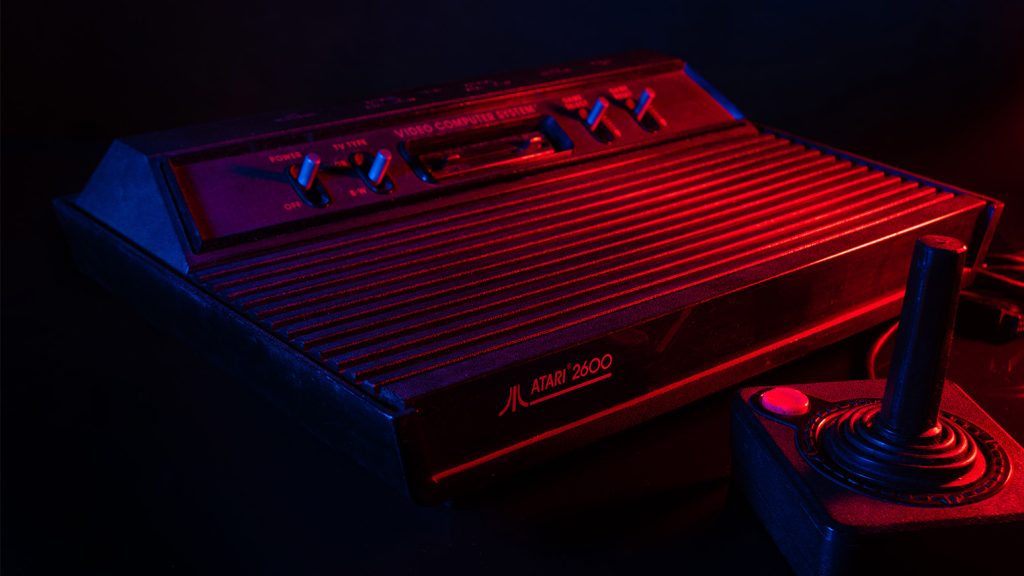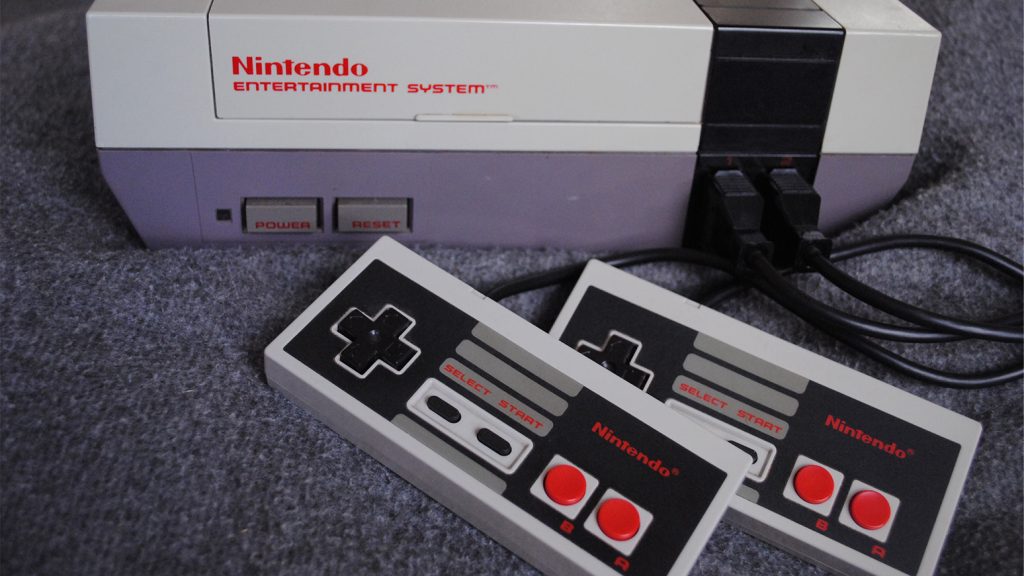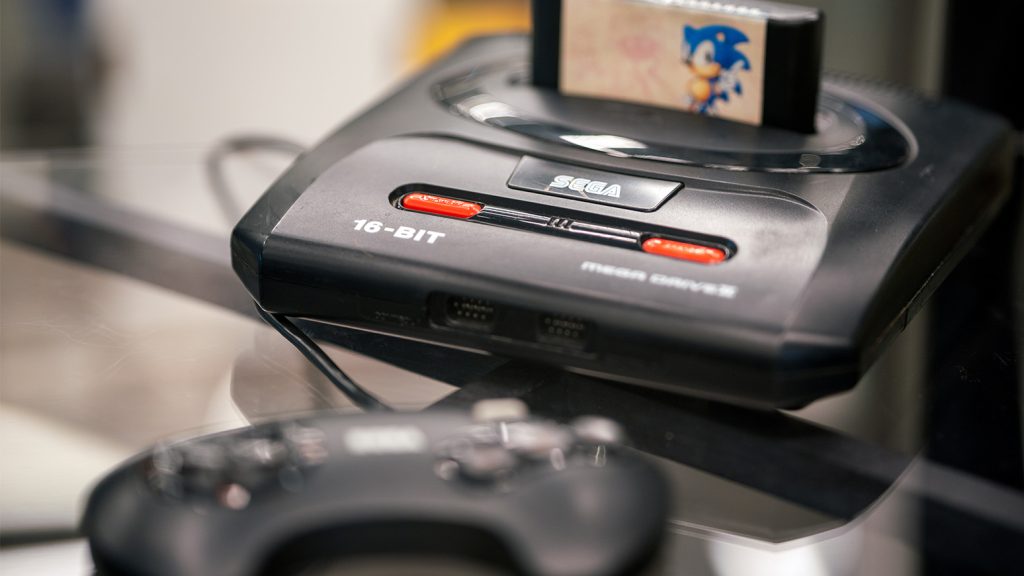October 6, 2023
Over the last 40 years, video games have grown from a novelty into a multi-billion-dollar entertainment industry. Games for the Atari 2600 in the late ’70s were often written, designed, programmed, and scored by one or two people; today’s big releases are created by enormous development teams, with dedicated writers, musical composers, and hundreds of software engineers.
The latest game consoles on the market, Sony’s PlayStation 5 and Microsoft’s Xbox Series X, cost around $500 each, and big game releases from major publishers ring up at $69.99. If that sounds a little out of budget, or if you just crave the gameplay experiences of a past console generation, we have good news– you can get the best classic video game systems for much less, and you can find tons of great games for a fraction of the cost. Cheap classic video game systems are frequently available at auction on HiBid.com in the Consoles category under Video Games.
1. Atari 2600 (1977)
In the late 1970s, visionary engineer and businessman Nolan Bushnell created the home video gaming market with the release of the Atari Video Computer System, which would later be re-dubbed the Atari 2600.
Gamers had an absolute blast with its simple, 8-bit graphics and sound and the ability to pop in a new game cartridge for a new set of experiences with games such as Pitfall!, Pac-Man, and Space Invaders. Today you can often find vintage 2600s and the Atari Flashback series for sale at auction with updated television hookups and large libraries of built-in games in place of the old Atari read-only memory (ROM) game cartridges.

2. Nintendo Entertainment System (1985)
When the Atari craze waned in the early ’80s, it appeared video game consoles had been a passing fad, but a Japanese company called Nintendo, that got its start selling playing cards, picked up the baton and ran. The Nintendo Entertainment System, or NES, was released in the U.S. in 1985. It quickly became the new standard in video games, to the extent that “playing Nintendo” became synonymous with playing video games.
The 8-bit system boasted better graphics, better sound, and a slew of soon-to-be bestselling game franchises thanks to Shigeru Miyamoto and other Nintendo gaming design legends. All your favorite Nintendo game series, including Super Mario Bros., Metroid, and The Legend of Zelda, debuted on this system and joined a library that also included smash hits from third-party publishers like Capcom’s Mega Man series, Konami’s Castlevania games, and sports titles like Super Tecmo Bowl. You can still find and play most of them today for roughly the amount of change in your car’s cupholders.

3. Sega Genesis (1989)
Sega, another Japanese gaming company, had an 8-bit system that competed with the NES internationally but was unable to match the popularity or market share of the NES in the U.S. Undeterred, Sega jumped back into the market in 1989 with the Sega Genesis, a 16-bit system that raised the bar for graphics and sound quality. Thanks to the cheaper availability of ROM chips, the Genesis had games of greater length and complexity.
Sega’s own Sonic the Hedgehog game franchise anchored the system for many years. Adaptations of coin-op arcade games like Mortal Kombat and a legendary string of sports games from EA Sports like Madden NFL Football, FIFA, NHL, NBA Live, and others convinced millions of gamers to buy the Genesis. As of this writing, there are several Sega Genesis consoles up for auction on HiBid, as well as several of the console’s best games.

4. Super Nintendo Entertainment System (1991)
Nintendo wasn’t about to relinquish its staggering video game market share to Sega. It followed the NES with the Super NES in 1991. Another 16-bit machine, the SNES had a highly advanced independent sound chip designed by Sony that gave it an edge over Sega’s Genesis in music and sound effects. Nintendo also maintained lucrative licensing agreements with the industry’s leading third-party publishers and had a very impressive stable of games. For instance, it took Capcom’s arcade classic Street Fighter II nearly a year longer to make the transition to the Genesis than it did migrating to the SNES.
The SNES and Genesis were the basis for the gaming industry’s first big “console war.” The 16-bit SNES continued to be a force in the market even after Sega and industry newcomer Sony had moved on to launch 32-bit gaming systems. The Super NES offered games from all of Nintendo’s hit like Super Mario and Zelda and launched new games like Donkey Kong Country which took full advantage of the new technology.
Video games can be wildly successful at auctions, selling for eye-popping prices. A Nintendo Legend of Zelda game brought in $870,000 at auction, which was a record at the time, only to be superseded by a sealed Super Mario 64 cartridge from 1996, which sold at auction for $1.56 million.

5. PlayStation (1995)
Before the release of the first PlayStation, Sony had published a few games under its Sony Imagesoft label, but its gaming hardware experience largely consisted of developing hardware components for Nintendo. At one point, the two companies explored the idea of launching a CD-ROM drive add-on for the SNES as a joint project, but the venture didn’t work out. In 1995, Sony went on to launch its 32-bit console, the PlayStation. In addition to having more advanced processing capabilities, the PlayStation was one of the first consoles to move from ROM cartridge game media to CD-ROM games.
The advent of 32-bit gaming brought with it a laundry list of new game franchises that were more sophisticated than ever. Franchises like Square Enix’s Final Fantasy took big steps forward graphically, and games like Tekken, Resident Evil, Gran Turismo, Metal Gear Solid, and Tomb Raider created more highly immersive worlds for gamers to explore.

Other Worlds Than These
These gaming systems, and many others, represent the earliest major entries in the home video games market. The industry has advanced by leaps and bounds technologically in the nearly 30 years since the advent of the PlayStation, but you can still frequently find these classic video game systems available and obtain them inexpensively on HiBid.com, along with enough games to keep you busy for some time to come.
Sell Your Old Game Consoles
Do you have old game systems you’d like to sell? Put them up for sale on HiBid and find eager buyers from around the world.